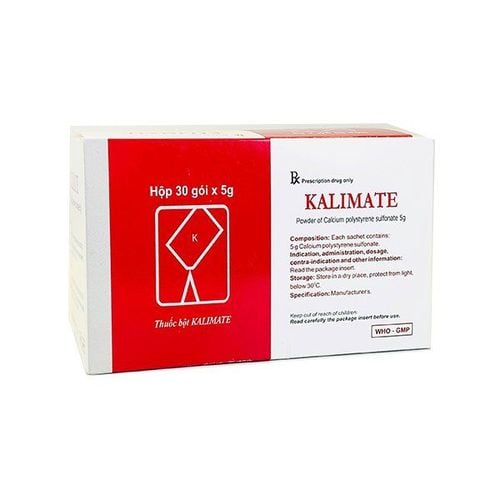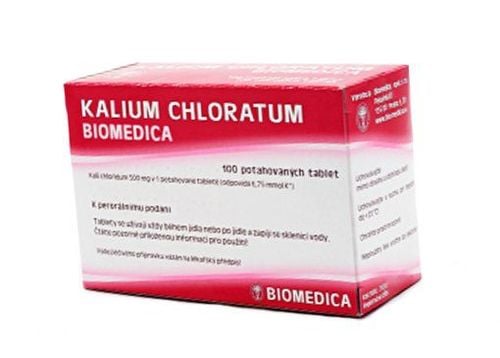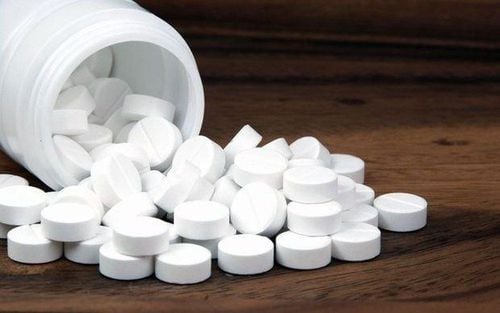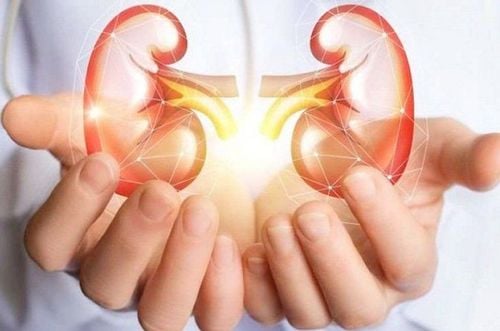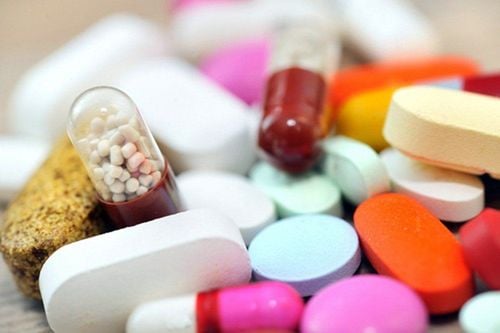This is an automatically translated article.
The article is professionally consulted by Master, Doctor Phan Ngoc Toan - Resuscitation - Emergency Doctor - Emergency Department - Vinmec Danang International HospitalA term used to describe a condition in which the blood potassium level is lower than normal; Hypokalemia is considered a dangerous emergency that can cause death if not detected and treated promptly.
1. What is hypokalemia?
Potassium is primarily an intracellular ion required to maintain the cell membrane potential. About 2% of total body potassium is in the extracellular compartment. Changes in these ions mainly affect the cardiovascular, neuromuscular, and gastrointestinal systems. The potassium level in the blood is usually 3.5 - 5.5 mmol/L. A blood potassium level higher than 6.0 mmol/L or less than 2.5 mmol/L can be dangerous and requires immediate treatment.
Hypokalemia is assessed according to each degree as follows:
Mild: Hypokalemia without clinical symptoms and electrocardiogram. Moderate degree: Hypokalemia may have abdominal distension, cramps, electrocardiogram with flattened T wave, ST segment depression but no severe symptoms such as severe arrhythmia, neuromuscular paralysis. Severity: Hypokalemia with clinically severe symptoms (arrhythmia or muscle weakness, paralysis, or acute rhabdomyolysis syndrome). Causes of Hypokalemia:
| Đi vào nội bào | Mất qua thận | Mất ngoài thận | Giảm cung cấp |
|---|---|---|---|
| Nhiễm kiềm cấp tính | Lợi tiểu | Tiêu chảy | Suy dinh dưỡng |
| Tăng thông khí | Kiềm chuyển hóa | Mất mồ hôi quá mức | Nghiện rượu |
| Insulin | Nhiễm toan ĐTĐ | Hút dịch sonde dạ dày | Chán ăn mạn tính |
| Đồng vận Beta adrenergic | Tổn thương ống thận | ||
|
Thuốc (lợi tiểu, aminoglycosides, amphotericin B) |
|||
| Hạ magne máu | |||
| Cường Aldosteron | |||
| Hội chứng Cushing |
2. Manifestations of hypokalemia
Blood potassium has an important role in the neuromuscular system, including the heart muscle, so the manifestations of hypokalemia are mainly in the cardiovascular and neuromuscular systems.
Cardiovascular manifestations include:
Weak pulse, decreased diastolic blood pressure, postural hypotension Listen to the heart with systolic murmur. Electrocardiogram shows U wave, flattened ST segment, extrasystoles of all kinds, especially dangerous when hypokalemia is severe, there is often QT prolongation and torsades de pointes arrhythmia, extremely dangerous for the patient's life. if not compensated with enough potassium in time. Symptoms in muscles such as: Weakness (extremities, respiratory muscles...), muscle pain, muscle cramps, rhabdomyolysis. Gastrointestinal manifestations such as: abdominal distension, decreased intestinal motility, constipation, vomiting, nausea.

3. Treatment of hypokalemia
The goal of hypokalemia treatment is to prevent life-threatening complications of hypokalemia such as cardiac arrhythmias, muscle paralysis... Patients with severe hypokalemia, potassium ≤ 2.5 mmol/l, with symptoms Muscle paralysis and electrocardiographic findings require immediate management by intravenous infusion. Need to find and treat the cause of hypokalemia Depending on the case, there are different treatment methods:
Mild hypokalemia (above 3.0mmol/l) can be treated with oral potassium chloride supplementation. to drink. As this is often part of poor nutrition, foods containing potassium may be recommended such as tomatoes, oranges (fruits) or bananas. Dietary and pharmacological potassium supplementation is used in patients treated with diuretics. People with mildly or moderately low potassium levels (2.5-3.5 mEq/l), who have no symptoms or mild symptoms, only need to take potassium in pill or liquid form. If cardiac arrhythmias or significant symptoms are present or if the potassium level is below 2.5 mEq/l, the patient should receive intravenous potassium infusion. In this situation, you need to be hospitalized or monitored in a designated emergency department. Potassium is given very slowly into a vein and monitored closely over several hours to avoid serious heart problems and to avoid irritation of the blood vessels where the needle was inserted. For those with severe and symptomatic hypokalemia, both intravenous and oral potassium must be used. In case of hypokalemia with changes on the electrocardiogram, monitor the ECG continuously on the monitor until the ECG returns to normal. When hypokalemia should supplement potassium through the diet such as tomatoes, oranges, bananas.

4. Some notes when treating hypokalemia
Monitor blood potassium test. Severe hypokalemia every 3 hours, moderate level every 6 hours, mild level every 24 hours until blood potassium returns to normal. Avoiding glucose infusion in hypokalemic patients will increase insulin secretion and decrease blood potassium. The speed and dosage should be according to the regimen. Potassium replacement therapy will be instituted according to the classification and severity of symptoms. Treatment of hypokalemia begins as soon as tests confirm the diagnosis. Vinmec International General Hospital is one of the hospitals that not only ensures professional quality with a team of leading doctors, modern equipment and technology, but also stands out for its examination and consulting services. and comprehensive, professional medical treatment; civilized, polite, safe and sterile medical examination and treatment space. Customers when choosing to perform tests here can be completely assured of the accuracy of test results.
Please dial HOTLINE for more information or register for an appointment HERE. Download MyVinmec app to make appointments faster and to manage your bookings easily.





